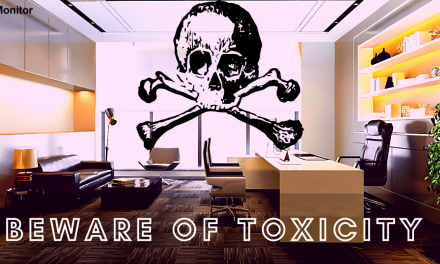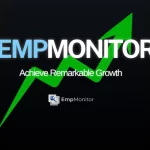Are you tired of constantly losing track of your projects? Then, say hi to the project tracking board to streamline the process of managing your tasks and projects. It stands as the ultimate solution for addressing organizational challenges related to managing ongoing or pending tasks and projects.
These boards go beyond mere organization; they act as vibrant centers, nurturing unity and propelling teams forward with momentum.
Each movement of a task, each shift across columns, echoes the rhythm of collective effort and shared purpose. These boards facilitate seamless communication, empowering teams to navigate challenges and celebrate milestones together through transparency and accountability.
In this blog, we have covered the transformative power of tracking boards for projects. We’ll explore how they streamline workflows and boost team productivity.
In a hurry? Listen to the blog instead!
What Is Project Tracking Boards?
A tracking board also known as a project management board is a visual tool used by teams to track the progress of tasks and projects.
It provides a clear overview of the status of various tasks, helping team members and stakeholders understand what the priority is, what you are currently working on, and what tasks the team has completed.
They facilitate communication and collaboration among team members, improve transparency, and help identify bottlenecks or areas where you might need additional resources.
These boards are physical boards with sticky notes or index cards, or they can be digital tools like project management software or online collaboration platforms. The fundamental objective of project tracking boards is to provide transparency, improve communication, and help teams stay organized and focused on achieving their project goals.
What Is The Role of Project Tracking?
The role of project tracking is essential throughout the lifecycle of a project. Here are the key roles of project tracking:
Resource Management:
These boards monitor and optimize the allocation of resources including personnel, equipment, and budget to ensure efficiency.
Budget Control:
Tracks project expenditures and compares them with the allocated budget to manage costs effectively.
Risk Management:
Identifies, assesses, and mitigates potential risks and issues to prevent project delays or failures.
These aspects collectively ensure that projects stay on track, within budget, and meet quality standards while fostering effective communication and collaboration among team members and stakeholders.
What Are The Types Of Project Tracking Boards?
Project tracking boards come in various types, each catering to different project management methodologies, team preferences, and project complexities. Here are some common project board ideas.
Kanban Board
Kanban board in teams gets favor in Agile project management. They typically consist of columns representing different workflow stages(e.g., To Do, In Progress, Done) and cards representing individual tasks or user stories. Team members move cards across the board as tasks progress through the workflow.
Task List Board
Task list boards are simple boards that list tasks or activities to be completed, along with relevant details such as assignees, due dates, and status. They offer a straightforward way to track tasks without the visual complexity of other board types.
Gantt Chart
Gantt charts project tracking board provide a timeline view of a project’s tasks and dependencies. They display tasks as horizontal bars along a timeline, allowing project managers to visualize task durations, dependencies, and milestones. Gantt charts are useful in planning and tracking project progress over time.
Burndown Chart
Burndown charts track the progress of work completed against the work remaining over time. They are commonly used in Agile and Scrum projects to visualize whether the team is on track to complete the project within the allocated time frame.
It’s essential to select the appropriate type of tracking board for projects based on the project’s goals, team dynamics, and management methodology. Additionally, many digital task management tools offer customizable board templates. These templates can help you suit different project needs.
7 Reasons You Need A Project Tracking Board
Here are seven reasons why utilizing a project monitoring board is beneficial:
Visual Representation:
Project monitoring boards provide visualization of the project’s progress, tasks, and status. This visual layout makes it easy for team members to quickly understand where the project stands and what tasks are priority.
Improved Communication
Having all project information in one central place helps team members talk easily about task progress, what tasks depend on others, and any problems they might face. It improves overall communication and collaboration within the team.
Increased Accountability
Team members become more accountable when tasks and responsibilities are defined. Everyone can see who is responsible for each task and whether they have accomplished it.
Identifying Bottlenecks
Project tracking boards help identify bottlenecks and areas where the project stalls. Project managers can address issues and keep the project on track by visualizing the flow of tasks and seeing where tasks are piling up.
Flexibility and Adaptability
Many project monitoring boards, especially digital ones, offer flexibility in terms of customization and adaptability to different project management methodologies (e.g., Agile, Kanban, Scrum). It allows teams to tailor the tracking board to fit their appropriate project needs and workflows.
Enhanced Decision-Making
Project monitoring boards provide a clear overview of the project’s status and progress. It enables stakeholders to make informed decisions about resource allocation, prioritization, and potential course corrections. These boards provide the necessary data and insights to support strategic decision-making throughout the project lifecycle.
Real-Time Updates
With digital project tracking boards, team members can update task statuses immediately, ensuring everyone has the latest information. It reduces the need for manual status updates and ensures that stakeholders are always informed about the project’s progress.
Utilizing project management tools like EmpMonitor teams can streamline their project management processes and increase the likelihood of project success.
About EmpMonitor
EmpMonitor is a robust employee monitoring and project management software. It allows employers to gain insights into how their employees are utilizing company resources and time during work hours. However, employers need to implement EmpMonitor software for transparency and consideration of employee privacy and legal regulations.
Some key features of EmpMonitor software may include:
Activity Monitoring
EmpMonitor tracks employee activities, including time spent on tasks and applications, which can provide insights into project progress and productivity.
Screenshots
The ability to capture screenshots allows supervisors to monitor employees’ work progress and identify any issues or challenges they may face during project execution.
Internet Usage Tracking
Monitoring internet usage can help project managers understand how employees utilize online resources and whether they are focused on project-related tasks or engaging in non-productive activities.
Attendance Tracking
EmpMonitor, a workforce management software tracks employee attendance and login/logout times. It helps project managers and employers to ensure that team members are available and actively engaged in project activities during designated work hours.
Productivity Analysis
EmpMonitor provides productivity reports and analytics based on employee activity data, allowing project managers to identify trends, patterns, and areas for improvement in project execution and team performance.
Therefore, EmpMonitor features complement project management processes by providing insights into employee productivity, engagement, and compliance. All these are the essential aspects of successful project execution.
Read More
How To Pick Monitoring Software With 7 Best Project Management Features?
What Are The Benefits Of Using Project Tracking Board?
Using a project board has many benefits. Here are some of them:
- Tasks are easy to see, so everyone knows what needs to get done.
- The board displays details about tasks, like how important they are, when they’re due, and who’s responsible for them.
- Utilizing dedicated software for the board can automate tasks, and rearrange tasks as they progress.
- The board can uncover problems in the project that you didn’t know about.
- You can use the board to make reports and plans, which helps keep everyone informed and makes decision-making easier for stakeholders.
The Bottom Line
Project tracking boards are powerful tools for keeping projects organized and on track. With clear task visualization and detailed descriptions, they make it easy for teams to understand what needs to be done and when. Using special software can automate tasks and save time, while also helping to identify and resolve issues early on.
Efficient task distribution ensures that everyone knows their role, and progress can be monitored effectively. Overall, project tracking boards promote collaboration, accountability, and efficiency, making them indispensable for successful project management. Embracing these tools can lead to smoother workflows and better project outcomes for teams of all sizes.









